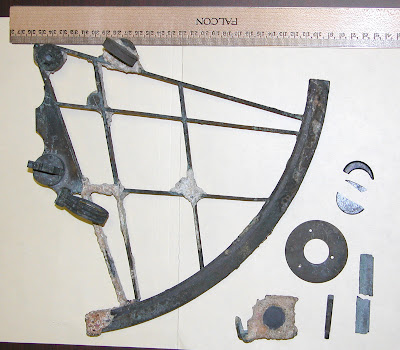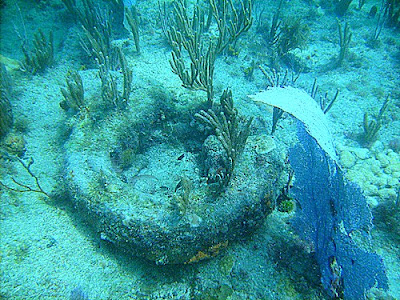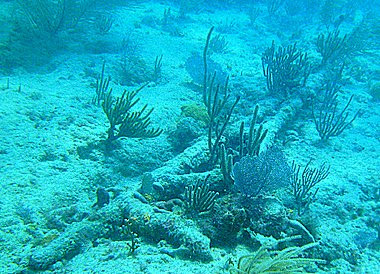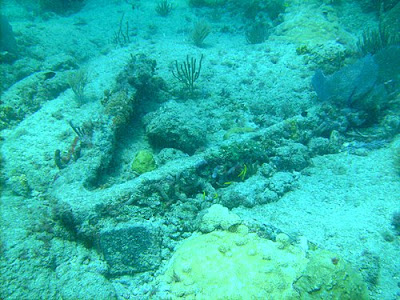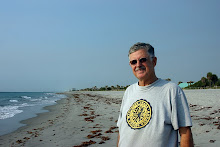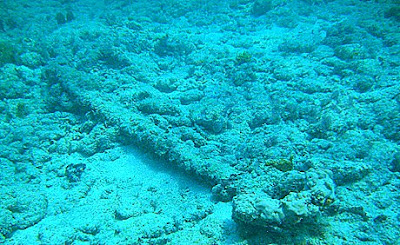
This is an iron rod about 5 & 1/2 ft long with an eye at the end of it. There are two of these in the area.
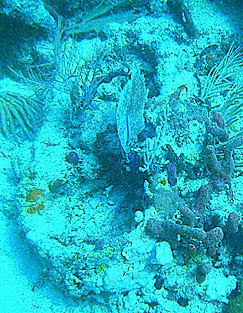
This item I hadn't been able to relocate until recently. I thought it had been taken. But it was there all along, covered with a great amount of growth. It is 24 x 12 x 4 inches, and resembles a figure eight, using imagination.
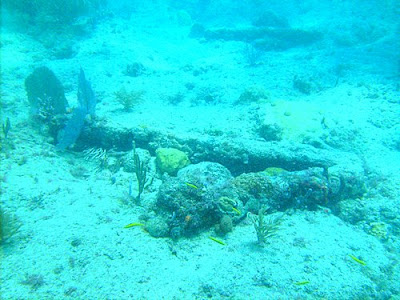
There are two of these "V" shape structures at the site. This I have named the round nosed one. The other, pictured in the background here, I named the square nosed one. The"V" legs of the round nosed structure are 37 & 58 inches. The angle between the "V" is approx 40 deg. These, I have been told, are related to the steering mechanisms. Does anyone Agree?

This seems to be a heavy tackle item, a lifting hook, lying on its side. The overall circumference of this object is 102 inch. The measurements are 38 x 26 x 5 t0 6 inches. I estimate its weight at 200 to 300 pounds. It seems as if rigging gear of this magnitude would indicate that it came from a large ship. The object is fastened firmly to the reef with encrusted matter.
Here is a schematic of the heavy tackle item.
Click on above picture to view the entire in situ artifact web album .
Use your back button to return to this site.
